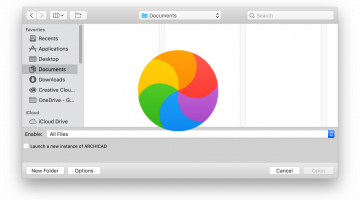- Sphere Factor Mac Os X
- Sphere Factor Mac Os Download
- Microsoft Sphere Os
- Os Sphere Vision Means
- Sphere Factor Mac Os Catalina
If you are using a Linux-based pc or Mac OS X and want to manage a vSphere-environment then you might ask yourself the question if there is a native OS-version of the vSphere Client available for your platform.
The short answer is: no.
The longer answer is: do you need one? And is there an alternative? For most day to day operations you should move to the vSphere Web Client. And you can access that from your Linux system and Mac OS X. The only problem with that is that it only works with vCenter. So what do you do when your vCenter server is down or what to do if you only have one ESXi server?
The Azure Sphere OS uses the region code setting in the e-fuses to look up the region in the Linux wireless regulatory database and then selects the channels allowed for that region. If no region code is programmed into the e-fuses, in which case the e-fuses remain set to 0x00 0x00, or if the characters '00' are programmed, the OS defaults to a conservative set of channels that are generally allowed in all. How To: Install Google's New Jelly Bean 4.2 'Photo Sphere' Camera on Your Samsung Galaxy S3 News: Full Galaxy Z Flip Spec Sheet Review — Samsung's New Clamshell Phone Is a Flagship Even Without the Fold. If you are using a Linux-based pc or Mac OS X and want to manage a vSphere-environment then you might ask yourself the question if there is a native OS-version.
There are a few tools that you can use to make administration for your environment simpler. But you would always need the vSphere Client on Windows at least once after installation of ESXi to for example import the vCenter Virtual Appliance (explained here) Or to create a virtual machine.
It is also possible to import the appliance from the command line with VMware's OVF Tool, which is available for Linux and Windows. How to do this is explained in this article. Alfada mac os.
Run a Windows VM in Player, Workstation or Fusion
To work with the full vSphere Client on Windows you can run it in a Windows virtual machine or from a physical Windows computer to configure the ESXi-host and create virtual machines. I personally run openSUSE and work with Linux for the largest part of the day. But from time to time there are Windows-based applications for which there really is no alternative and for those cases I have a Windows VM on my laptop.

Access your VM-console from Linux or Mac OS X with a VMware Player-console
Once your ESXi-host is up and running and you have multiple virtual machines running and maybe also vCenter deployed as a virtual appliance then you can access the console of those virtual machines with VMware Player. This tool is available as a download for Windows and Linux (www.vmware.com/go/downloadplayer) and it's included with Mac OS X.

Access your VM-console from Linux or Mac OS X with a VMware Player-console
Once your ESXi-host is up and running and you have multiple virtual machines running and maybe also vCenter deployed as a virtual appliance then you can access the console of those virtual machines with VMware Player. This tool is available as a download for Windows and Linux (www.vmware.com/go/downloadplayer) and it's included with Mac OS X.
With VMware Player installed you can run it from the command line and connect to an ESXi-host:
vmplayer -h
Sphere Factor Mac Os X
This will open a VMware Player window and requests login to the host. You can provide the host's IP-address with the -h parameter but if you leave it out you can enter it with the user credentials. Ouroboros (itch) (raccoon_js) mac os.
Once you are logged in you will see a list of available virtual machine. If the VM is not powered on and you open a console to the VM it will be powered on. If it's already running you can connect directly to the virtual machine. In the image below you see a VM running Windows. It also has the vSphere Client to allow you to manage the ESXi-host.
Host management with SSH and vCLI
You can also perform some management tasks from an SSH-connection to your host. You must enable your SSH-server on the ESXi-server before you can do this. You can enable this from the vSphere Client or from the Direct Console User Interface (DCUI) on the server's console. Once you have access with SSH and you want to use the DCUI for configuration purposes you can type this command:
Sphere Factor Mac Os Download
This standalone visualizer software for PC and Mac gives users access to many handy features, like video recording, picture-in-picture and annotation, as well as a number of unique, advanced features, like automatic image correction, side-by-side comparison, a personalized media library and one-click upload to social media & file sharing sites. Blender – Free and Open Source 3D Creation Software for Windows, Mac, Linux. Blender is one of the best 3D graphics program available for 3D art creation. It is an open source software which is available for free download on various platforms including Windows, Mac OS X, Linux, etc.
Microsoft Sphere Os
dcui
Os Sphere Vision Means
And it will open the menu-based console in your SSH-session. To close it press ctrl-c.
Sphere Factor Mac Os Catalina
Another possibility to work with your ESXi-host from the command line is to use the vSphere Command Line interface (vCLI). This can be installed as an application on your Linux-system but also on a Windows-system. Information and the download can be found here:
www.vmware.com/support/developer/vcli
